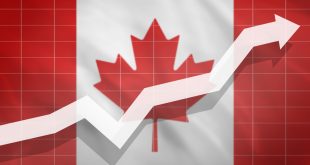Mohammed Hashad, Director of Research and Development Department at Noor Capital and the member of the US Association of Technical Analysts, commented on the most prominent developments in the markets and the performance of the most important financial assets, in an interview on Dubai TV. He began his comments by talking about the recovery of the US stock market again, observers believe that the main stocks have achieved notable gains despite the negative US jobs data.
Hashad pointed out that US stock indices achieved notable gains on Wall Street, which are the highest weekly gains ever since the beginning of the year 2023. The gains of the S&P 500 index exceeded 6%, and the Dow Jones index added gains of nearly 5%, and the lion’s share of gains was for Nasdaq, with gains exceeding 6.5%.
Hashad believes that, in conjunction with the Federal Reserve’s rate policy decision, a clear recovery in risk appetite emerged, supported by the rise of the largest technology companies, led by Apple shares. Apple shares rose, as did the profitability rate, and it increased per share by approximately 1.46.
Hashad also pointed out that one of the reasons for the recovery in US stocks is the record decline in US Treasury bond yields, adding: “When demand for bonds declines, this is also in the interest of stocks. US stocks ignored the very negative jobs data, and the markets quickly interpreted that into bets that the Federal Reserve had arrived at the final extent of raising interest rates, or at least he will not raise interest rates during the next meeting.
US Dollar’s Performance
Regarding the performance of the US dollar, Hashad believes that the dollar is declining below 105.00 points. As for the reasons for such decline, and whether it was impacted by the jobs data, and whether bond yields were affected by the negative jobs data, Hashad explained that the labour market, in the American economy, added only approximately 150K jobs, less than expectations of 180K, and approximately only 50% less than last month’s reading of 336K jobs.
The markets interpreted the latest reading of Non-Farm Payrolls data to mean that there will be no need to raise interest rates during the next meeting of the Federal Open Market Committee in light of the slowdown and decline in wages as well as the change in the unemployment rate. Wages have also become at their lowest level in two years, putting pressure on the US dollar, but the reason could potentially be the sharp decline in US Treasury yields, given that 10-year bond yields lost nearly 5% before.
Oil’s Performance
Crude oil continues to suffer weekly losses despite the voluntary reduction plan by Russia and Saudi Arabia. Is the equation now one of supply and demand? “We witnessed weekly losses for crude oil, and oil prices were seen last Friday around the level of eighty dollars per barrel”, Hashad replied.
“Oil ignored the continuing geopolitical tensions in the Middle East region, and we can say that the key word at the present time is the levels of demand and supply” He added, noting that one of the most important reasons that put pressure on oil prices is the current concerns about the slowdown in Chinese demand for oil after a slew of negative economic data, the most recent of which was Purchasing Managers’ Index. On the other hand, there are concerns about the abundance of supply after the return of Iranian oil production of nearly thirteen million barrels per day to the markets.
Asked how to interpret the summary of the Bank of Japan meeting, Hashad says: “I think that the Bank of Japan will be somewhat patient with the monetary easing policy. From my personal point of view, there is a state of uncertainty regarding determining the positive cycle for everything related to wages and inflation, and I also believe BoJ will continue to implement the yield curve control policy and will not abandon negative interest rates even if interest rates rise in the long term”.
Gold’s Performance
Regarding gold and the performance of the famous safe-haven asset at the present time, and asked what factors do affect gold price movements, and whether these factors are the geopolitical crises in the region or US Treasury bond yields, affect gold in the near term, Hashad believes that all factors are in play. They combined to push gold prices higher, but with the pressure on US Treasury bond yields and there existed technical movements around the $2000 per ounce level. According to Hashad, it was assumed that gold could have risen further surpassing the said level, but there are technical factors that put pressure on the price of the precious metal.
Asked about the warning of a possible economic recession in the United States and what this warning is based upon in addition to the relationship of such a warning to the developments in the Middle East, Hashad answered: “There is no doubt that the Middle East region and the geopolitical tensions have an impact, but I believe that the American economy, in light of the recent American data, and from my personal point of view, is still far from recession levels, but there may be a slowdown, but I rule out a recession.”
 Noor Trends News, Technical Analysis, Educational Tools and Recommendations
Noor Trends News, Technical Analysis, Educational Tools and Recommendations




